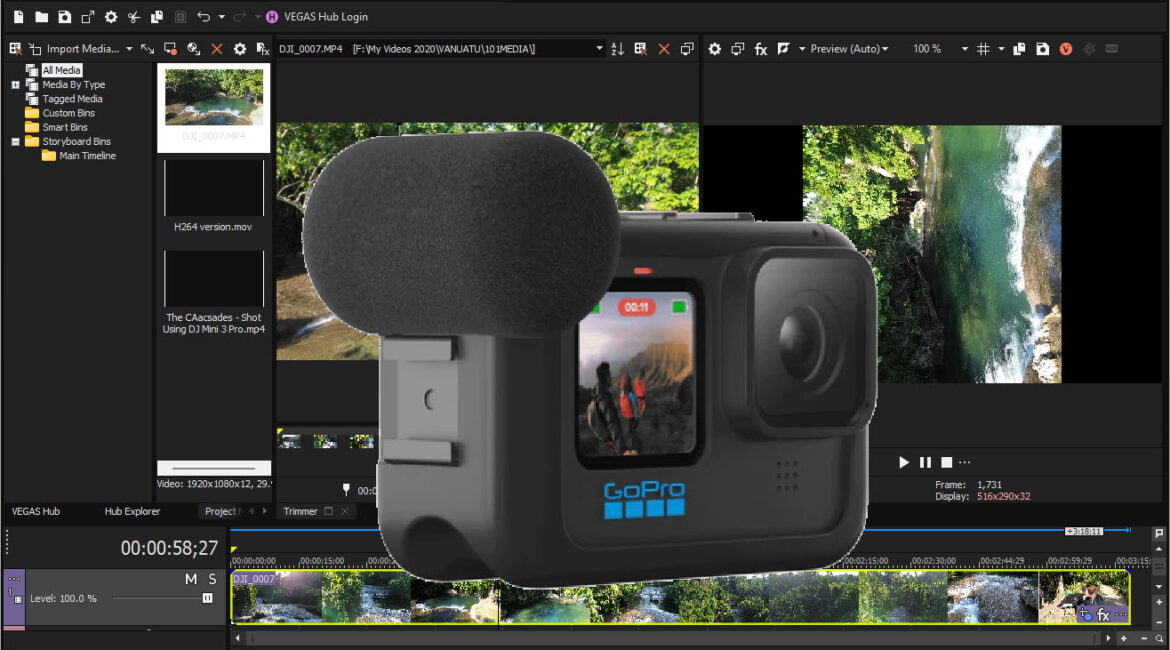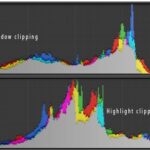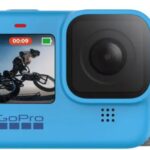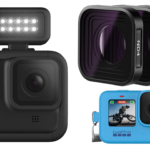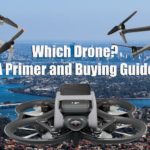So, via your GoPro or drone, you have your footage. What’s next then? What things can you do to take raw footage and turn it into a video others will enjoy watching, and maybe, even inspire them?
I am going to write a number of small tutorials running through the basics of such things as editing, adding transitions, adding special effects, the use of titles and so on give you some ideas.
To start with, I’ll look at editing; I did a piece on this some time back, and rather than reinvent the wheel, I am including it here and adding some new stuff to it.
As a video editing program, I use DaVinci Resolve as it is a very powerful package indeed, available for Macs, Windows and if you are so inclined, LINUX. Better still, with some minor limitations, there is a free version too.
Resolve has a bit of a learning curve, but not so much you won’t pick up the basics pretty quickly, and then at your leisure, go into more in-depth stuff. There are plenty of tutorials online, and Blackmagic Design, the owners of DaVinci Resolve, have a downloadable tutorial manual you can get for free, complete with sample files to play with.
OK let’s get started.
Editing
You will hear a lot of people in the editing business talk about “workflow” when it comes to video editing. Don’t get put off or intimidated. It’s not part of a secret set of terms only experienced video editors understand and have to roll up a trouser leg and wear one sock to be allowed to learn.
It is just shorthand for “I plan and do my editing using these specific steps”.
There is no right way or wrong way, you do what you feel comfortable with. Someone’s way of approaching their editing may be one man’s ceiling but another man’s floor. Or person. Whatever.
But it is good before you start to have a clear idea of what your intended end result is and have a plan to get there.
The basic steps for this are:
- Collate all the assets (video clips audio files such as voice over, music, ambient sounds etc and still shots and graphics) you are going to use into a single folder. I use a folder system. For example, if the project is called “Drone shots over inlet” inside that I have sub folders for drone video, non-drone video, music, voice (narration), ambient, stills, graphics and other.
- Write out a very rough script of what story you want to tell with your video. It doesn’t have to be War and Peace or even typed. A series of stick drawings (called a storyboard) will do. It simply gives you a plan to follow.
- In your video editing package, create the tracks you are going to be using. The total of ALL the tracks is called the timeline, and is measured by, obviously time starting at 0:00 (the beginning) and going to the end of the finished video.Important: if you can, name each track according to its content and / or colour code it for easy reference. Using my “Drone shots over inlet” example, I’d have separate video tracks for drone shots and shots from other cameras, a track for stills, separate audio tracks for voice overs and music and I tend to add another track for graphics such as water marks, titles etc.
- Now you can import all your assets into the program. If your video is short and you don’t have that many, then with DaVinci Resolve you can simply import them into a single “bin”. But as your needs grow and you have more and more clips, stills, graphic images, audio files and so, down the track you’ll want to investigate the bigger use of the bin system to keep even closer track of your assets.I start adding video clip assets to each of the tracks in the order you have in your script / storyboard. Again using my “Drone shots over inlet” example, I’d lay down all the drone shots in rough order and then using the editing tools such as the trimmer, cut out the pieces I don’t need. I’d then do the same for any other video clips. Of course, you can move them around on the timeline as you like to change the order; in fact, I guarantee you will. But as you get more experience / confidence in the process, especially with your script / storyboard, you get better and better at initially laying out the clips.Note: that any audio captured with the video is usually “grouped” to that video clip and sticks with it unless you “ungroup” it. When you import a video clip to the timeline and place it onto a video track, most video editing packages will automatically create a matching audio track for you. This can be edited separately later if needed, or even removed altogether.
- Next you can add the stills to their track in the timeline in the approximate location they are to appear in the finished video. You can change the duration of a still easily, but it is best to keep length short as people lose interest after gazing intently at a still image for a while.
- Now you can add the voice over to match the story. Again if you have it as one long clip, you can edit it by cutting and moving pieces around to match any video it refers to eg “from this shot from the drone, you can clearly see the yacht club below”
- I tend to leave the music until the very last. But that is just me and it DOES depend on the storyline and the music you have chosen. In fact, adding music and other sounds to a video is a whole separate lesson as you want the clip to match the music. Stay tuned and I’ll deal with this a bit later. For music, I use a program called Sonicfire Pro 6.
- Finally, you can add your titles and any graphic overlays such as watermarks. For these, you can use the inbuilt tools of DaVinci Resolve or use a 3rd party application such as Adobe Photoshop Elements to create them and import these into DaVinci Resolve.
- Once all the editing is completed, you then export the finished video using whatever format your viewing audience needs. This might be an export to YouTube, to a USB stick or SD card, to Instagram, a Blu-ray disc and so on. When rendering – the final part of the editing process – you nominate to DaVinci Resolve what that destination is to be, and it will create the completed file accordingly.
In the next tutorial, I’ll cover adding transitions to your video, and describe the do’s and the very, very important don’ts!
In the interim here are links to some resources you may find useful:
Useful Downloads
- Blackmagic DaVInci Resolve (free)
- Manual for Blackmagic Design DaVinci Resolve (free)
- GIMP (a free image editor like Adobe Photoshop)
- Final Draft (a scriptwriting program)
- SonicFire Pro 6 (for music creation)
- Audacity (free audio editing)
- Snagit (to create screen grabs stills and videos)
- Kyno (image / still / audio asset manager and simply brilliant)
See also:
Part 2: Adding Transitions to GoPro (and drone) footage
Part 3: Adding Titles to GoPro (and drone) footage

